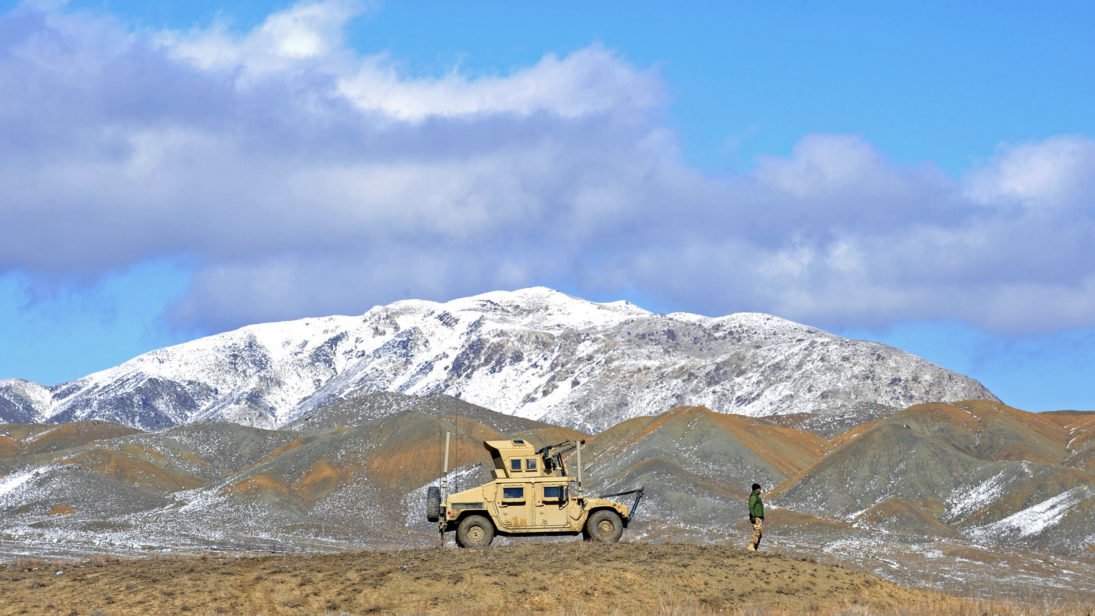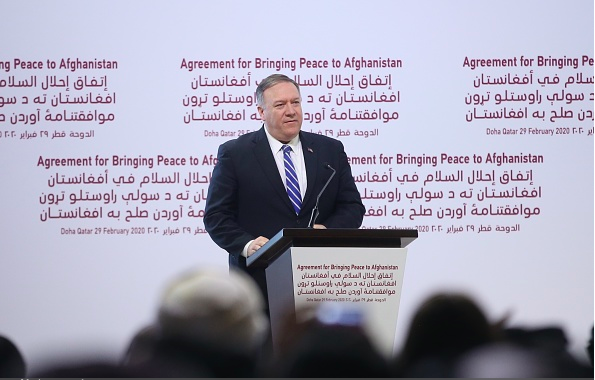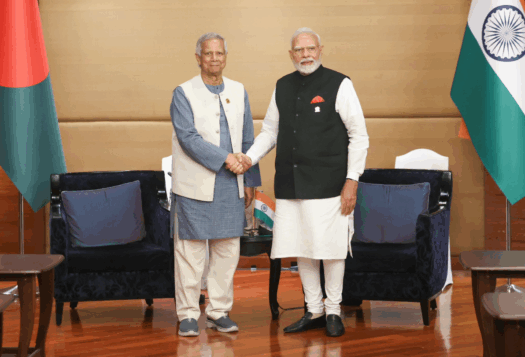
As the United States and the Afghan Taliban inked an agreement to end the almost two-decade-long war in Afghanistan on February 29, many onlookers welcomed the possibility of an end to the violence while nonetheless fearing conflict resurgence and possible regional spillover. These fears are not unfounded: since the deal’s signing there has been an uptick in violence between the Taliban, Afghan government forces, and U.S. troops. The peace agreement calls for a gradual withdrawal of foreign forces and an intra-Afghan dialogue, and urges the Taliban to cut ties with any terrorist groups threatening the United States and its allies. It is important to understand the perceptions and implications of this peace deal in the region for two of Afghanistan’s most consequential neighbors: India and Pakistan. It is in Pakistan’s interests that future security dynamics in Afghanistan give Pakistan an edge over its regional rivals, allow it to manage cross-border threats to the west, and maintain its leverage over the Taliban. For India, it is important that its relationship with the Afghan government not be jeopardized, including security and diplomatic relationships that it has cultivated over the years.
Afghanistan and its role in Pakistan’s regional strategy
It is in Pakistan’s interests that future security dynamics in Afghanistan give Pakistan an edge over its regional rivals, allow it to manage cross-border threats to the west, and maintain its leverage over the Taliban. For India, it is important that its relationship with the Afghan government not be jeopardized, including security and diplomatic relationships that it has cultivated over the years.
Pakistan’s interests lie in an intra-Afghan power sharing arrangement that leaves involved parties, specifically the United States, dependent on Islamabad for its enforcement. This type of arrangement has heretofore guaranteed Pakistan a fairly steady supply of aid from the United States. Along these lines, Pakistan would benefit from continued state weakness and decentralization in Afghanistan. A united Afghan government might restrict Islamabad’s influence in Afghanistan. While Pakistan and the Taliban may have a long-standing relationship, a Taliban government with total control would likewise reduce Pakistan’s leverage therein.
Pakistan’s relationship with the Taliban derives from its own internal ethnic issues in its regions bordering Afghanistan, which have a sizable Pashtun population. Pakistan’s support for the Afghan Taliban—an Islamist form of Pashtun nationalism combining Pashtun tribal customs of Pashtunwali with a society based on sharia—largely provided a work-around solution to Pashtun sub-nationalism within Pakistan by depicting Islamabad as sympathetic to Pashtun political goals. During the U.S-Taliban peace talks Pakistan played a large role in bringing the Taliban to the negotiating table through its influence over Taliban leadership—primarily based out of the Pakistan city of Quetta. Pakistan demonstrated its significance in the negotiations after it released one of the chief Taliban negotiators, Abdul Ghani Baradar, after U.S. pressure in 2018, illustrating Pakistan’s power to enable or restrict attempts at resolution unsupervised by Islamabad.
While Pakistan has offered support for a “responsible withdrawal” of U.S. troops, the possibility of reemerging militancy in its border areas is a cause for concern. The majority Pashtun Tehrik-e-Taliban (TTP) militant group which targets the Pakistani state—also known as the Pakistani Taliban—is a cause for concern for Pakistan as the U.S. reduces its presence in the region. The TTP officially formed in 2007 in response to the Pakistan military’s growing footprint in the Federally Administered Tribal Regions (FATA) as part of assistance to U.S. operations in Afghanistan. The TTP has since carried out some of the deadliest attacks in Pakistan. Pakistan has also alleged that the TTP had received support and sanctuary in Afghanistan as retaliation from Kabul for Pakistan’s continued support to the Afghan Taliban. As of September 2019 there are some 3,000-5,000 TTP members in Afghanistan according to the U.S. Department of Defense.
The security situation in Pakistan’s tribal areas is of major significance to Pakistan, as it had at great cost worked to dismantle safe havens of the TTP and other militant groups in those regions and many have reportedly relocated to Afghanistan. In the event of a U.S. withdrawal and the Taliban’s return to Afghan politics, the TTP could take advantage of the ensuing developments for a potential resurgence. TTP members could either merge with the Taliban or defect to other groups, such as the Islamic State in Khorasan Province (ISKP), or alternatively join forces with Taliban members who do not support the peace process. Recently, however, multiple senior TTP leaders have been killed in Afghanistan by Afghan and U.S. forces, allegedly to fulfill Pakistan’s demands that the United States and Afghanistan weaken the TTP for the Afghan peace deal to go ahead. These sudden developments coincide with the signing of the Afghan peace deal and have led some to speculate that the U.S.-Taliban agreement is playing out in Pakistan’s favor, since the United States may increase reliance on Pakistan to force the Taliban to deliver on the terms of the deal.

India’s concerns in Afghanistan
For India, the signing of the US-Taliban deal may jeopardize its present stake in Afghanistan if the Afghan government is sidelined moving forward. Since 2002, India has developed significant influence with the Afghan government through trade, cultural and diplomatic links, and foreign aid. This had alarmed Pakistan, which saw Afghanistan as part of its “strategic depth” to maintain a safe zone on its western frontier while it focused its foreign policy on India.
India would be wary of an Afghanistan ruled by Islamic extremists like the Taliban, as they might provide fresh fuel for anti-India terrorist groups operating in Jammu and Kashmir, which would take cues from the Taliban in increasing their activities.
India has kept its options and communication channels open with multiple parties involved in Afghanistan, including the Taliban, as it becomes mindful of emerging realities in a post-peace agreement. One such reality is that the Afghan government may cede a degree of legitimacy and power to the Taliban. Still, India has maintained that any peace process in Afghanistan must be Afghan-led and Afghan-owned, and that the democratically elected government in Kabul must be given priority. India would be wary of an Afghanistan ruled by Islamic extremists like the Taliban, as they might provide fresh fuel for anti-India terrorist groups operating in Jammu and Kashmir, which would take cues from the Taliban in increasing their activities. Last year the Pulwama suicide bomber linked to the traditionally anti-India militant group Jaish-e-Mohammad (JeM) was reportedly inspired by a “Taliban victory” in Afghanistan. JeM has also previously cooperated with the Taliban against its rivals and found safe-havens in Afghanistan. Notably, JeM appears excluded from the groups the Taliban is required to cut ties with on the terms of the U.S.-Taliban agreement.
Post-peace deal, India will likely aim to keep its relationship with Afghanistan intact in the future to counter Pakistan. Afghan intelligence, for instance, reportedly provided India with intelligence for the targets of the India Air Force’s February 2019 Balakot airstrikes against a reported JeM terrorist camp linked to the Pulwama attack (although Pakistan has dismissed claims that India hit its intended target). India stands to gain from supporting the Afghan government while maintaining communications channels with the Taliban, recognizing their renewed political legitimacy. India is in a better position today than in the 1990s to influence outcomes in Afghanistan, owing to its increasing regional clout, strategic partnership with the United States, and growing ties with regional powers like Iran.
Conclusion
In the absence of an alternative, even after the signing of the U.S.-Taliban agreement, Pakistan is likely to continue using the Afghan Taliban as a counterweight against rising Indian and Iranian political influence in Afghanistan. It especially will hope to prevent potential Indian interference in Pakistan by means of Afghanistan. As of now, Pakistan benefits from a situation that would enable it to weaken the anti-Pakistan TTP and increases the Taliban’s legitimacy within the Afghan political process. India understands that peace and reconciliation in Afghanistan with Pakistani involvement will not be favorable to its long-term interests. The strategic rivalry between India and Pakistan, and any future hostilities it may entail, has the potential to derail the intra-Afghan negotiations. India would prefer to back the democratically-elected Afghan government rather than support the traditionally Pakistan-supported Taliban, which would not guarantee its interests in Afghanistan.
***
Image 1: DVISHUB via Flickr
Image 2: Anadolu Agency via Getty Images


